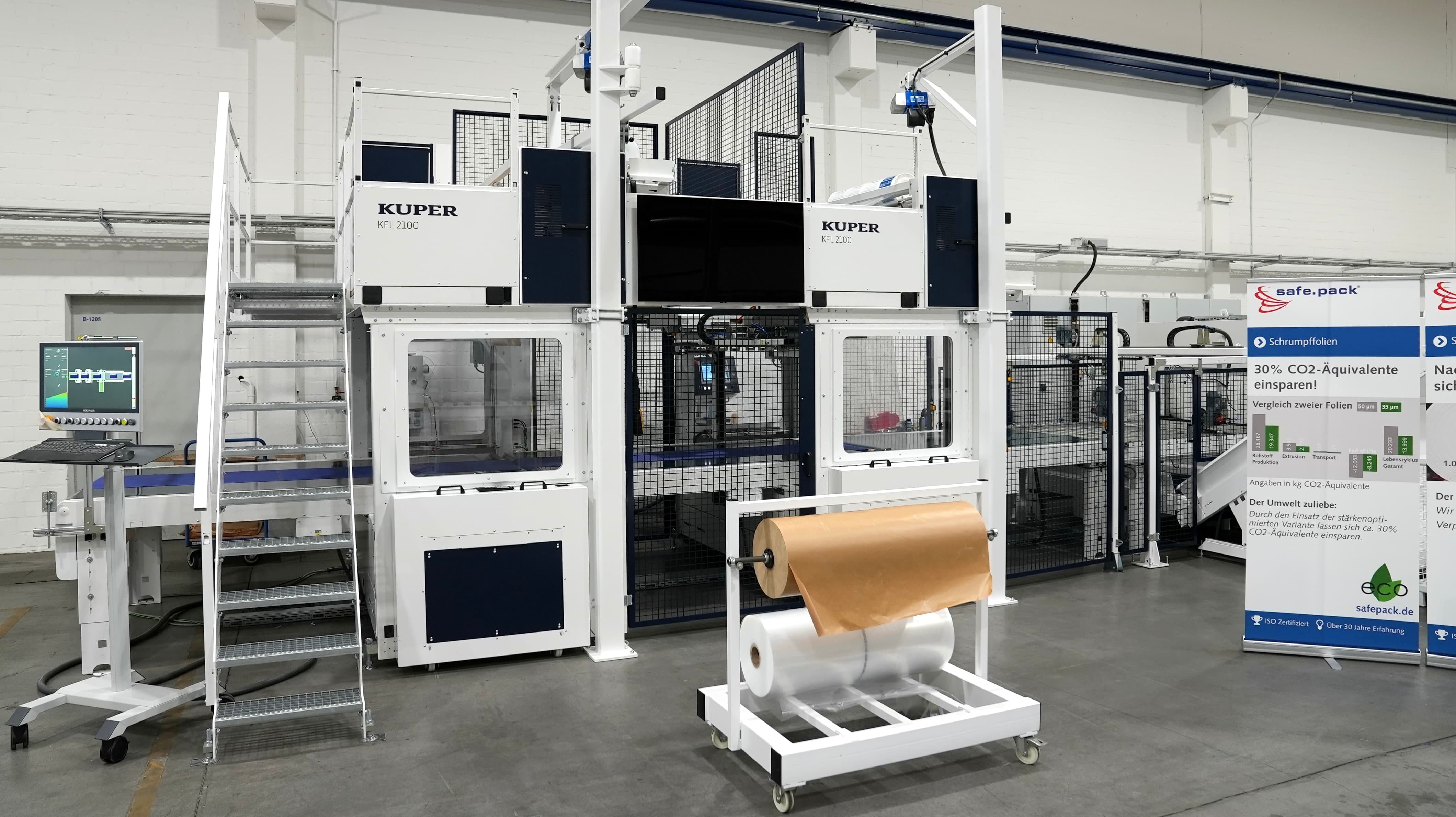Efficient Packaging: New Solutions Aim for Better Results and No Waste
Efficient packaging solutions have to stay ahead of the curve in order to offer production managers a business advantage today. In this article, we look at some of the most common packaging materials and solutions, as well as how these are evolving for different applications.
Overview of packaging materials used today
Every packaging solution relies on certain materials, depending on objectives. This overview of some of the most common packaging materials offers insight into how to use them productively.
Film: This is a common type of packaging material that can be used with a shrink tunnel and side cutting machine. The shrink tunnel is used to shrink the film around the product, providing a tight, secure fit. The side cutting machine is used to cut the film to the appropriate size and shape. Film is a cost-effective and versatile packaging solution, but requires energy to shrink the film.
Paper: It can be used with a side cutting and end cutting machine. These machines are used to cut the paper to the appropriate size and shape. Paper is a sustainable and eco-friendly option, but it may not provide as much protection as film or carbon-neutral packaging.
Cardboard: Made from renewable raw material wood, cardboard packaging is one of the more eco-friendly packaging materials. It is particularly well-suited for products that require high levels of protection, such as cabinets (compared to paper, the strength of this material is far higher). The cardboard packaging process also doesn't require a high voltage for shrink tunnels, which is a cost-efficient solution for companies who are looking for a sustainable and efficient way to package their products.
While these materials can be used exclusively, they’re also used in conjunction with each other, depending on the application or product.
Trends in efficient packaging
New technologies are changing the way we package, while also creating new business models. Some of the latest developments in packaging machine technology include:
Batch size one: This approach aims to eliminate waste by eliminating overproduction and offers producers a direct-to-consumer opportunity. Instead of producing large batches for individual customers, it focuses on making each product order as small as possible. This approach is especially useful for small companies with limited resources who want to compete with larger brands.
Edge protection: This process involves adding extra layers to the product itself during manufacturing so that it can be safely wrapped in packaging later on. Package protectors, designed to prevent damage or wear at the corners and edges of a package during shipping, are added to a product’s packaging. Made from cardboard, this sustainable packaging option adds strength while offering further benefits.It eliminates the need for separate wrapping materials and can reduce costs by up to 30 percent compared with conventional methods.
Low-waste cardboard cutting and folding: This new solution in automated packaging aims at significantly minimizing material waste in production. It uses precise cutting machines to accurately size packaging and eliminates the need for human labor by using robots to measure, insert products into carbon-neutral packaging, and perform other packaging tasks.
No matter the material or current industry trend, the packaging solution you choose must be reliable, flexible, and adaptable to your needs. Additionally, it’s important to consider the productivity, safety, and sustainability potential that your solution offers you and your team. Contact KUPER for an efficient packaging solution for your business today.

